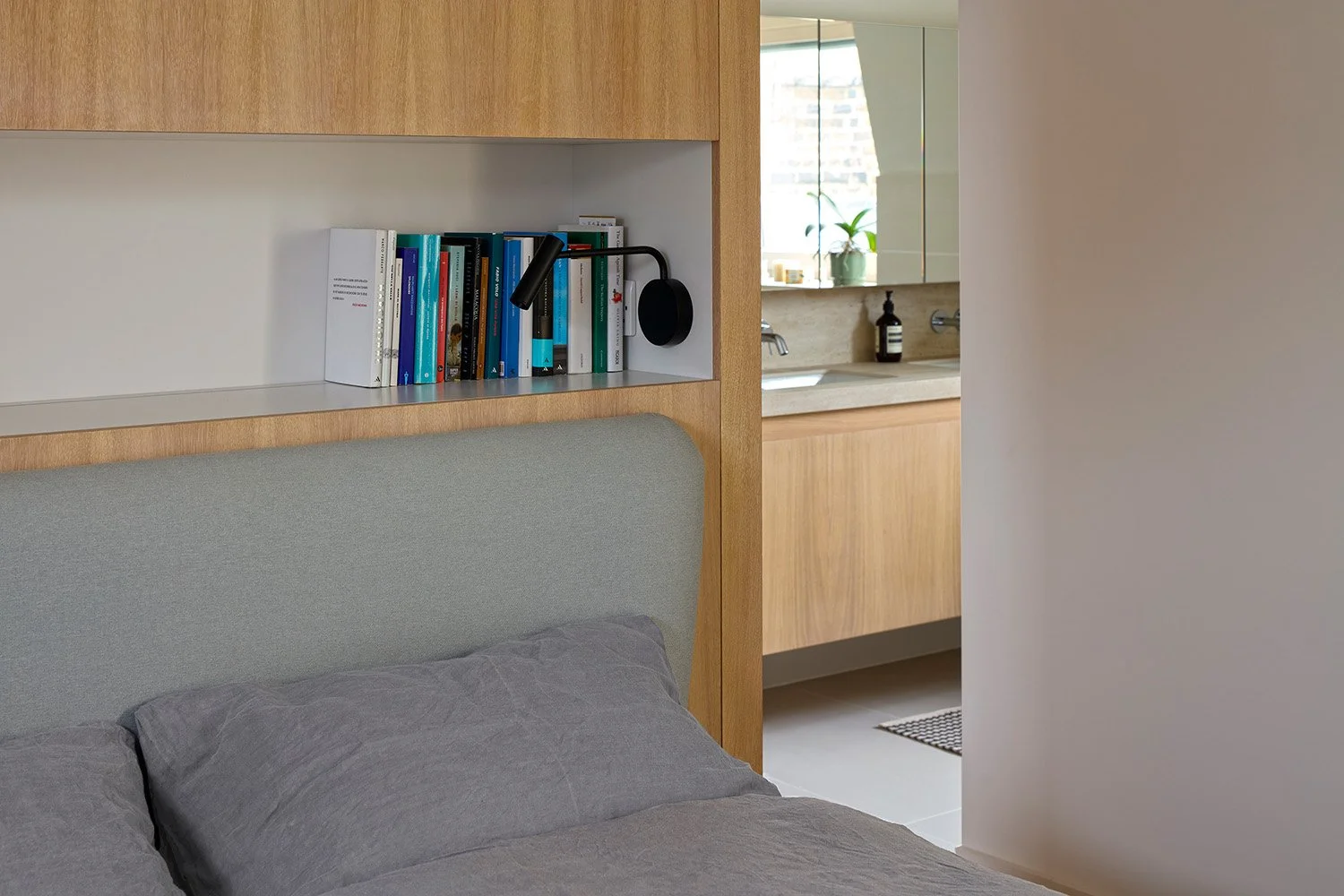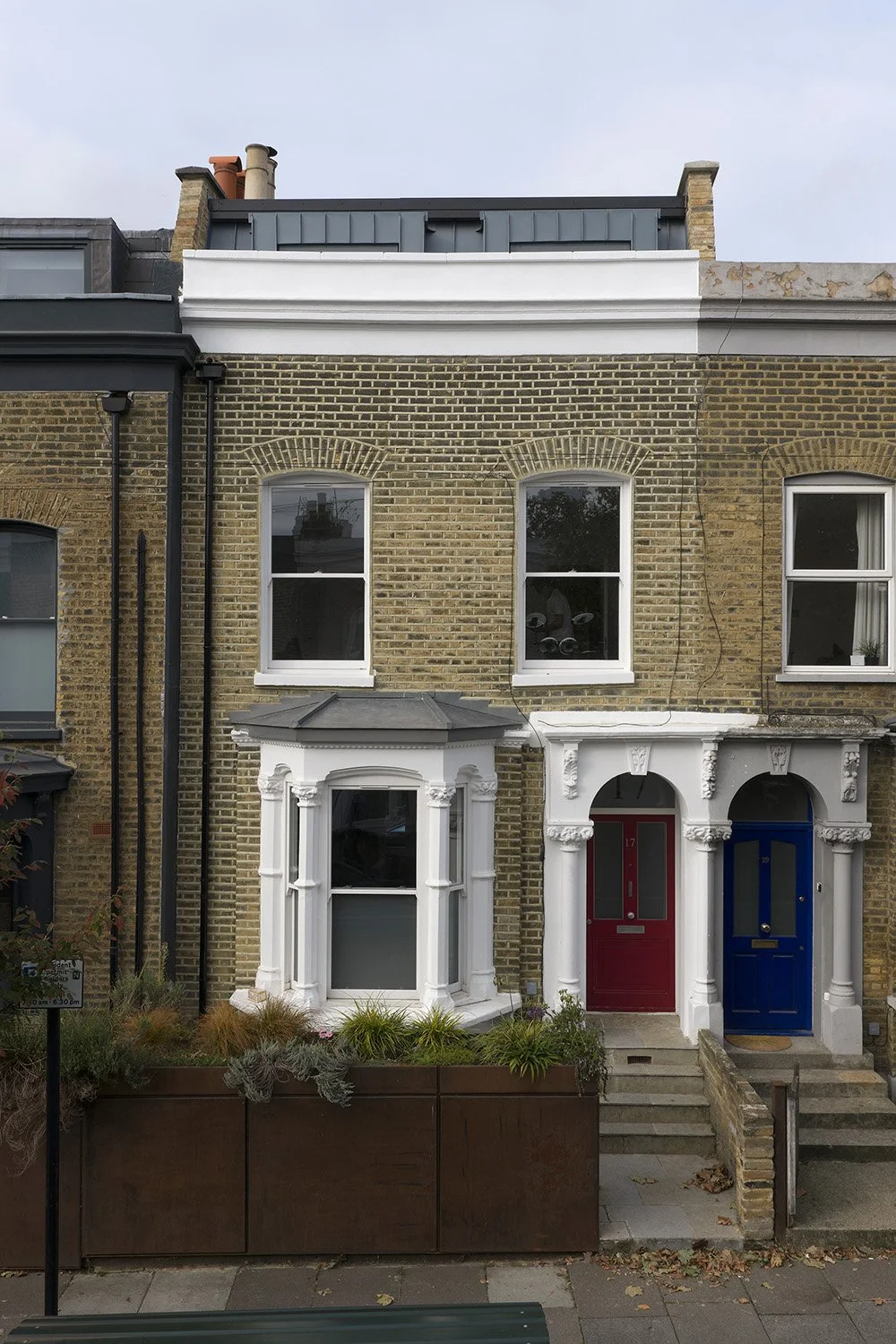How to Design Your London Home for an Air Source Heat Pump
A calm, well-insulated loft bedroom that holds warmth even on cold winter mornings.
updated 15 Nov 2025
Why “Heat-Pump Ready” Comes Before “Heat-Pump Installed”
Thinking of replacing your gas boiler with an air source heat pump (ASHP)? The technology is proven — but the real challenge is preparing your home so it performs properly.
At Studio CMA, we don’t install heat pumps. We design homes so they’re ready for them — improving insulation, resolving planning constraints and coordinating the full low-energy strategy so the system works efficiently from day one.
As of late 2025, heat pump subsidies may become more limited. Reports ahead of the Budget indicate that eligibility for the Boiler Upgrade Scheme is likely to narrow. This makes early planning even more important, because funding may be significantly reduced for many homeowners.
How Air Source Heat Pumps Work — in Plain English
An ASHP works like a fridge in reverse. It extracts heat from the outside air — even on cold days — and uses it to warm water for your radiators or underfloor heating.
Because it moves heat instead of creating it, it can deliver up to four times more heat energy than the electricity it consumes. When powered by green electricity, it’s virtually zero-carbon at the point of use.
Key benefits
Up to 4× more efficient than gas heating
Compatible with solar PV and other renewables
Long-term running-cost savings
No local carbon emissions
A zinc roof and discreet dormer bring light, space and better thermal performance.
Why London Homes Need Extra Care
Installing an ASHP in London can be complex. Our housing stock is older, denser and often protected by conservation rules.
Common challenges include:
Limited outdoor space for the external unit
Conservation-area restrictions on visibility and noise
Listed-building consent for external or internal changes
Mixed insulation levels in period homes
Neighbour proximity and noise limits
Before installation, we often help clients secure a Lawful Development Certificate or Planning Permission to confirm compliance — a valuable safeguard for future resale.
With grant support becoming less certain, it is worth reminding homeowners that fabric improvements will matter more than ever. The less the system needs to work, the less it costs to run.
Fabric First: Why Insulation Comes Before Technology
Heat pumps run at lower water temperatures (around 40–50 °C vs a boiler’s 65–75 °C), so insulation and airtightness are essential.
Without fabric improvements, the system will work harder, cost more to run and may leave rooms under-heated.
Before specifying a heat pump, we assess:
Roof, walls and floors — can they be insulated sensitively?
Windows and doors — do they need upgrading or draught-proofing?
Ventilation — how will fresh air and moisture be managed?
We use energy-modelling tools (such as PHPP) to test comfort and performance. The goal is a balanced home that’s warm, quiet and efficient.
With potential reductions to heat pump subsidies, a well-insulated home becomes the single most important factor in achieving low running costs.
Natural light, warmth and timber textures — everyday comfort that follows good fabric design.
Questions about insulation?
Read our article about insulating period London properties.
Navigating Permissions and Regulations
Most detached or semi-detached houses can install a heat pump under Permitted Development Rights, but several conditions apply:
The outdoor unit must not exceed 0.6 m³.
It must sit at least 1 metre from the property boundary.
Noise output must meet MCS 020 standards.
Only one unit per dwelling.
If you live in a flat, listed building or conservation area, you’ll likely need formal planning or listed-building consent.
Installers must be MCS-certified, and systems must meet Part L (energy efficiency) and Part O (overheating) of the Building Regulations.
New Policy Context: Budget 2025
Reports indicate that the Chancellor is preparing to restrict eligibility for the Boiler Upgrade Scheme. Grants may be limited to households receiving specific benefits, removing support for many middle-income homeowners.
For you, this means:
Heat pump grants may drop sharply
The value of fabric-first work becomes even more significant
It may be beneficial to act before the new rules take effect
Costs and Practical Considerations
A typical domestic ASHP installation in London costs £10 000–£14 000 (before the grant).
However, most projects also include:
Radiator or underfloor-heating upgrades
Insulation improvements
Electrical-supply checks or rewiring
If you’re planning a refurbishment or extension, integrating the system into that design phase saves cost and disruption later.
Budget 2025 signals suggest that homeowners should plan for lower levels of government support in future. Designing for a heat pump early can preserve eligibility if the current grant structure remains available for a short period.
Why Work with an Architect
A retrofit-experienced architect ensures your heat-pump project forms part of a coherent low-energy strategy, not an isolated upgrade.
We:
Assess your home’s energy performance and weak points
Coordinate planning and listed-building approvals
Integrate the system design within your drawings
Liaise with MCS-certified installers to align performance targets
The result: a comfortable, low-energy home that’s truly future-proof — and beautiful to live in.
In a policy landscape where funding is uncertain, it becomes even more important that every element of the design works hard for comfort and performance.
Next Steps
If you’re considering a heat pump as part of a renovation or retrofit, start with a clear understanding of your home’s performance and planning context.
Book an Architect’s Home Visit & Appraisal to discuss your options and create a roadmap for low-carbon heating.
Or learn more about our Retrofit Strategy Service for detailed modelling, insulation design and sequencing advice.
Greg Mathers and Daniela Ciarcelluti, founders of Studio CMA Architects, helping London homeowners design warmer, low-energy homes.




